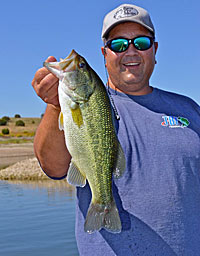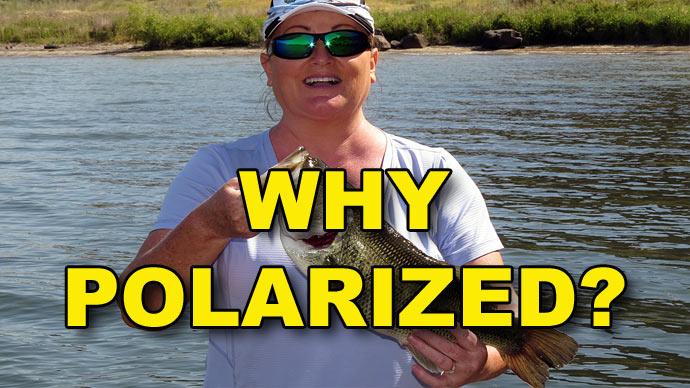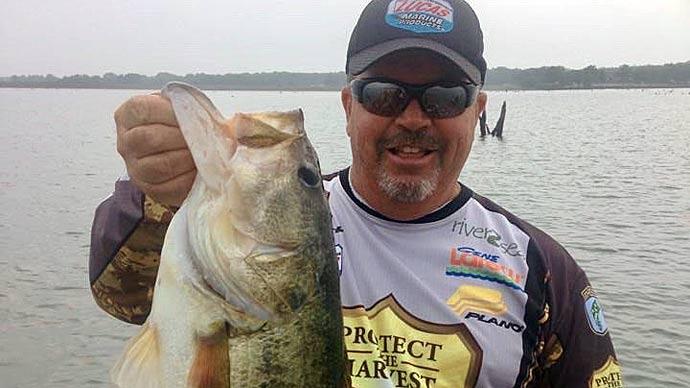
The only thing that outnumbered the preponderance of kayak and cooler manufacturers at ICAST 2017 was the number of companies making sunglasses. Every other booth had someone hawking sunglasses, but the situation was perfect for what I had in mind. I wanted to find out what separated sunglass manufacturers and their products. What are the key elements anglers need to be aware of when considering purchasing a pair of glasses? What is best for anglers when picking lens colors, composition, fit and other factors?
All the big names were at ICAST – Costa, Solar Bat, Smith, Maui Jim, Oakley, Wiley X, and some lesser-known companies looking to make a name for themselves and show their wares.
I have worn Ono Trading Company sunglasses for decades. One reason is that they were one of the first to offer readers or bifocals in sunglasses. As my eyesight began to fail, I realized that charter fishing, guiding, and life generally was much easier with sunglasses with readers. Seeing wasn’t that much of an issue when I was tying clinch knots with 20-pound test line, but finding the eye of a small hook with thin, 4- or 6-pound fluorocarbon became a problem; 1 or 2-pound ice fishing line or sewing thread? Forget it.
I liked the fit and lens color of the Ono glasses, but the most significant factor was they had readers. Ono Trading Company was nice enough to send me a pair of glasses. They offered a lifetime guarantee and replaced the glasses a couple of times free of charge. The problem was I outlived Ono Trading Company. When the eyepieces began to disintegrate and the lens fell out of the frame with too much regularity, I sent an e-mail to Ono. I didn’t get an answer. I found out why.
Eye Ojo Corporation had purchased Ono Trading Company. They are still in the business of producing high-quality eyewear, especially for anglers.
Ryan Dunn of Eye Ojo Corporation (www.eyeojo.com) said that anglers should look for several things in a pair of sunglasses. “The lens tint is important because it enhances different colors. You need to consider what type of fishing you’re doing most, offshore, deep sea, lake, or stream. A lens with an amber or copper base is best for inland fishing, while a lens with a gray base is better for offshore.”
The frame style is paramount because it determines fit. “Everyone has their preference of frame style, but the most important part is fit and weight. You don't want to feel like you're wearing a brick on your face all day. Also, you want the fit to be right because it can give you a headache if it's too tight, and if it's too loose, it will fall off your head,” said Dunn.
Lens material is another important consideration, “Most fishing lenses are made from either glass or polycarbonate. Glass will give you the clearest view and are the most scratch resistant. Polycarbonate is also clear and shatter-resistant. Most are safety rated. Glass is more expensive than PC.” Eye Ojo glasses do not float. They do come in a floating clamshell case.
Eye Ojo glasses are available with 1.50, 1.75, 2.00, 2.25, 2.50 strength readers or bifocals for visually challenged anglers like me. Lenses are available in blue mirror, green mirror, grey, and amber. Dunn said that anglers favor their Carabelle, Oak Harbor, and Petit Bois styles. I’m a big fan of the Carabelle.
Costa Del Mar (www.costadelmar.com) is one of the biggest names in sunglasses, and they are extremely popular with bass anglers. “Two of the most important things anglers need to consider is fit and lens color,” offered Melinda Hayes, bass community leader for Costa. “Fit is important because muscles work harder if the glasses don’t fit properly. Glasses that fit properly also block more light.”
Lens color is essential. “People pigeon hole blue lens for blue water when they let in more light than any other lens color,” offered Hays. One of the most popular lens colors for bass anglers is Sunrise Silver Mirror. “The Sunrise Silver Mirror offers 30% light transmission and is perfect for sight fishing and color transition. The Copper Silver Mirror is another great all-round color for fishermen.”
Lenses are available in lighter polycarbonate or glass. “Glass is more popular with serious anglers,” claimed Hays. “Glass offers better clarity, but polycarbonate has the advantage of weight and impact resistance.”
Two of the most popular frame styles of Costa sunglasses for anglers are Fantail and Tuna Alley. Frames are made from a bio-resin that is extremely heat and cold tolerant. Costa offers eight frame styles with readers 1.5, 2.0, and 2.5 strengths. Costa sunglasses do not float.
Flying Fisherman (www.flyingfisherman.com) sunglasses are made for anglers, and they have been on the market for a long time. Most anglers are familiar with the brand, endorsed by legendary angler Roland Martin.
“Fit is essential,” offered Flying Fisherman President Linda Sheldon. “Sunglasses should be comfortable and provide good coverage for your particular face shape. Frames that wrap around and have a non-slip nose and temple pads help ensure comfort and a stay-put fit.

“The most productive lens colors depend on the conditions. Our AcuTint smoke/gray lens is recommended for bright, intense sun or deeper water. Our AcuTint amber gives ideal contrast to illuminate fish and structure on the bottom for cloudy, overcast, foggy days or when fishing shallow water. And for very low light, early morning or evening, AcuTint copper or yellow-amber provides the most contrast to enhance clarity. The amber, copper, and yellow-amber are best for sight fishing.”
Flying Fisherman has a series of shatterproof, bifocal readers. All three frame styles are available in smoke or amber, with a choice of three reader powers – 1.50, 2.00, and 2.50. Flying Fisherman is one of the few eyewear companies to offer good, better, best retail price points.
Flying Fisherman’s most popular frame styles in the Action Angler Series are the Maverick, San Jose, Cabo, Fowey, and Buchanan. In the Master Angler Series the Morocco, Cay Sal, Triton, and Down Sea are the most popular with anglers.
Flying Fisherman doesn’t make any floating styles, but they offer a couple of floating eyewear retainers/lanyards.
You see a lot of serious anglers wearing Wiley-X (www.wileyx.com) sunglasses these days. “Fit is crucial in picking out the right pair of sunglasses,” claimed Ray T. Hill IV, Director of Corporate Accounts/Outdoor Sales for Wiley-X. “Side or peripheral glare/light can be just as damaging as direct light and will cause eye fatigue. Wiley-X frames generally allow outstanding peripheral protection from the backlight, peripheral light, and side penetration.
“In addition, our patented removable Facial Cavity™ Seals within our Climate Control Series models are specifically designed to eliminate peripheral light first and foremost but also protect against fine dust, pollen/allergens, and wind while supercharging the performance of the polarized lenses by as much as 15 percent.”
Wiley-X offers 40-plus frame models and ten polarized lens tints. “All Wiley-X models are designed with an 8-base wrap, meaning our lightweight frames' curvature allows for outstanding peripheral protection,” said Hill.
Wiley-X offers various lenses to choose from that incorporate different mirrored coatings, base tints, and light transmissions depending on your environment and preferences Wiley-X has all of your angling bases covered. These various lens options will increase your ability to cut through different water surfaces and view more depth. Wiley-X’s Filter 8Ô polarized lenses combine eight layers of lens technology.
“By today’s manufacturing standards and the quality of the materials used, polycarbonate lenses meeting ANSI optical clarity standards provide topnotch, crisp, clear vision and provide superior shatter-proof protection, unlike glass lenses,” said Hill.
Wiley-X does not offer readers. However, 99% of their models can be fitted with ASNI Z87.1 rated prescription lenses. Wiley-X glasses do not float, but their snug fit helps prevent them from falling off, and they offer a floating leash cord.
Floats (www.floateyewear.com) polarized glasses have a feature that every angler desires – they float! I can’t begin got tell you how many times I had customers looking over the side of the boat and had their glasses slip out of their pocket or fall off their face and flutter down into the depths of Lake Michigan. Floating sunglasses prevent that.
Floats offer a comfortable fit, stylish frames, and lens colors appeal to anglers. One thing they don’t offer is bifocals or readers, but I discovered an alternative. Hydrotac (www.hydrotaclenses.com.au) stick-on bifocal lens can be attached to any glasses. I’ll admit I didn’t have the best luck keeping them on the glasses, though. Maybe you’ll do better. Good luck!




